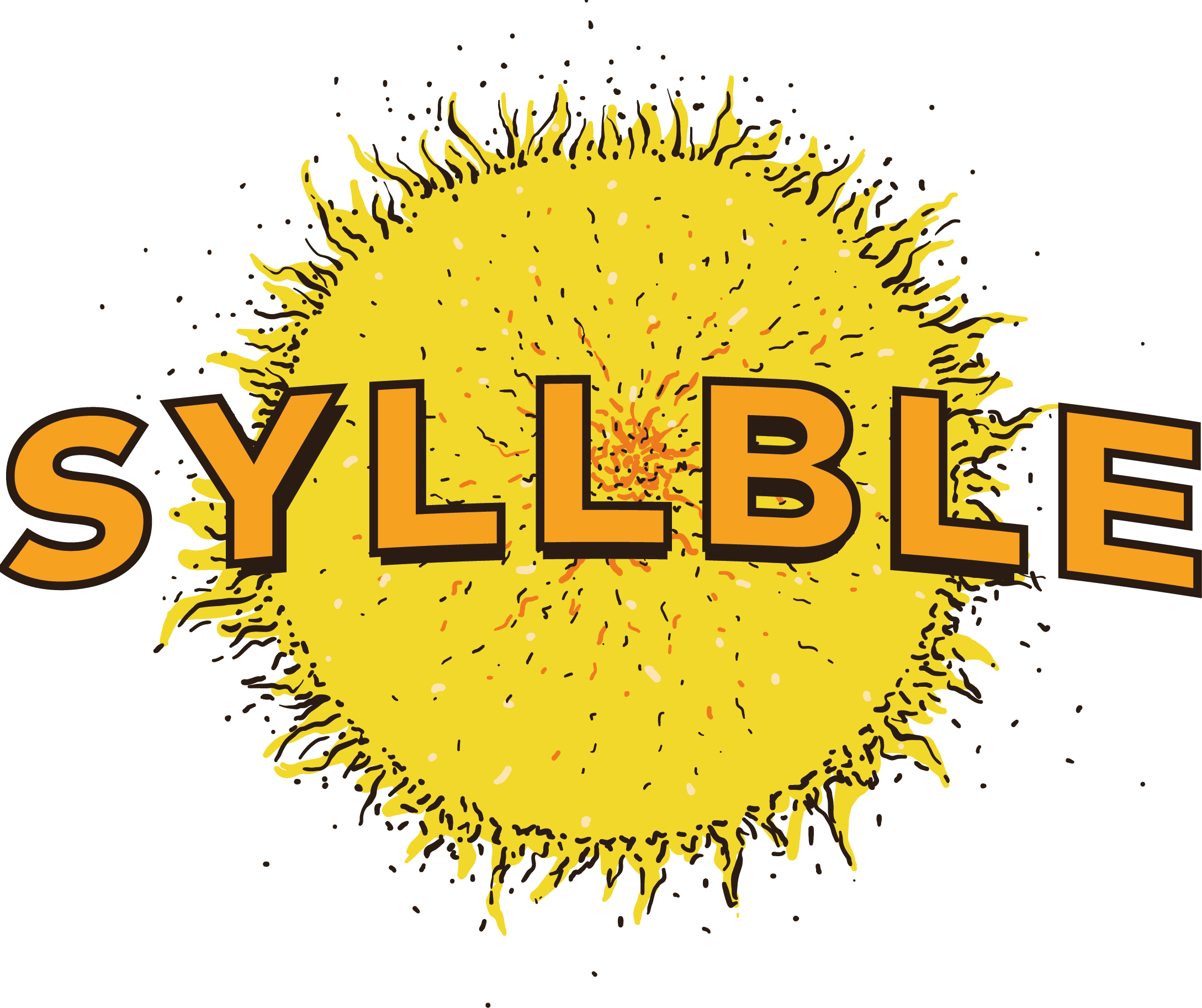The Orion Paradigm
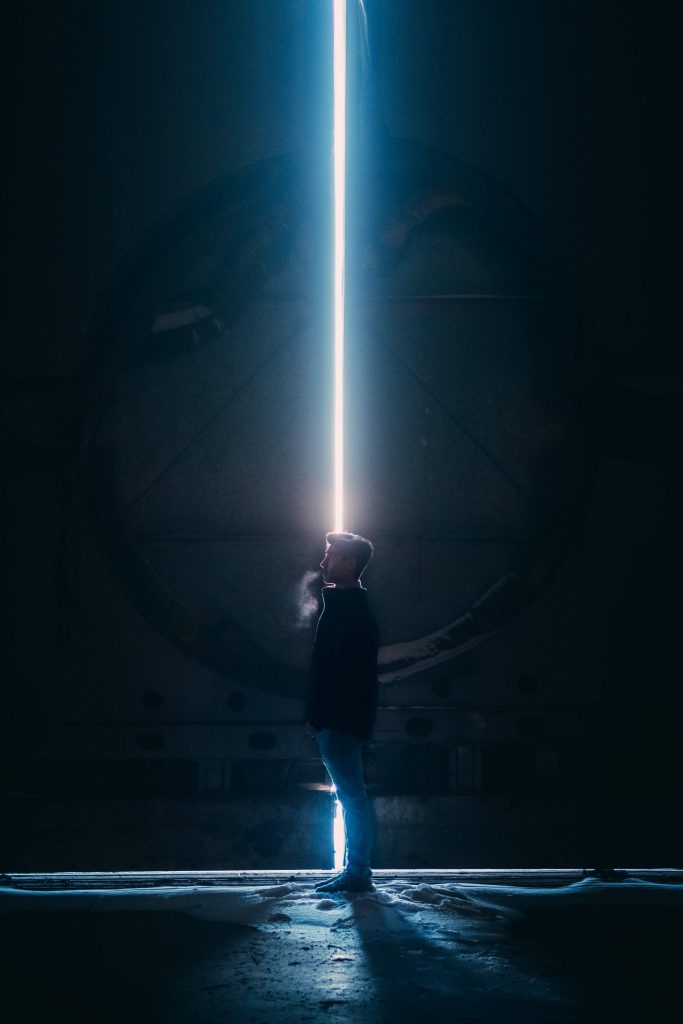
Creators & Roles
John Cho, science fiction writer
Logosou Kuyadah, speculative fiction writer
Micheal Sirjue, speculative fiction writer
David Russell, writer
Gabriel P.J Graydou, writer
June P. Johnson, writer
K.T. Seto, speculative fiction writer
Fabrice Guerrier, speculative fiction writer
Debo Odegbile, writer
Kat Rosemond, speculative fiction writer
T.H. Cooke, science fiction writer
Sean Mabry, speculative fiction writer
Paul Koch, writer
World summary/overview
Of the thousands of star-faring races alive today, the most established Septs have always converged onto the same truths. For instance, the existence of a race is not for the individual and the individual cannot escape the Law. But, the wisest and oldest races recognized long ago that the tapestry spun for the legacy of each race still relies on the individual and its ability to interweave its life for the greater existence of the Sept at any point in time. It is foolish to think otherwise. Each Sept strives to be one with the Law.
The earth and its inhabitants however remain an interesting anomaly from the untrained galactic visitor. They don’t adhere to the Galactic laws and regulations that all others must abide by. The earliest forms of these laws and regulations have been established for several hundred thousand years. It can’t be their fault (one would suppose) since earth creatures rarely live long enough to even consider their own existence in any serious manner. Some have pondered that their existence is nothing short of accidental, whereas others have wondered if they are not the result of some anonymous joke on the rest of the Galaxy. Something the Jakadu are known for. To be clear, every race that has been granted tari-tari was assisted directly or indirectly by the Sept mother race. Still the idea of an accident or a joke finding its way somehow into space by themselves leaves some thinking that perhaps there is a link here to some ancient provenance.
It is important that the characters stay true to their own existence and limited understanding of who they are. Some are human, some are earth beings, and some are aliens. They all have a view/opinion — some more anchored in thousands of years of experience, knowledge and Galactic politics while some are anchored in intuition and a “hunch”.
Humanity has an interesting wild-card in all of this (being the youngling/inferior race) — they have a culture that is anchored in concepts that are interestingly human; curiosity, ingenuity, survival, love. Are these unique? Probably not, but what is unique is that these human attributes are not buried in thousands of years / layers of protocols, regulations, laws, Galactic culture.
The Law
Just about every Sept has obsessed over adherence to the Law. It is said the Law first originated by the First Starfaring Race (FSR). The name of this race is lost on even the oldest of the remaining races. In fact, it is said that the Law was the prime mover that enabled the FSR to achieve sustainable starfaring capabilities and triggered the rise and growth of what we know now as the Galactic Federation. It is also said that unlike so many races within the Federation that became extinct from natural/cosmic disaster or war, the FSR just one day left without a trace. The Law underwrites all other Galactic Federation laws and policies. It simply states the following:
For a sentient life form to achieve its maximum potential, a life form must achieve the highest intersection point between its awareness, its ability to move across space and time, and its ability to impose its existence on the universe without self destruction.“
Orion Paradigm – Sept Breakdown
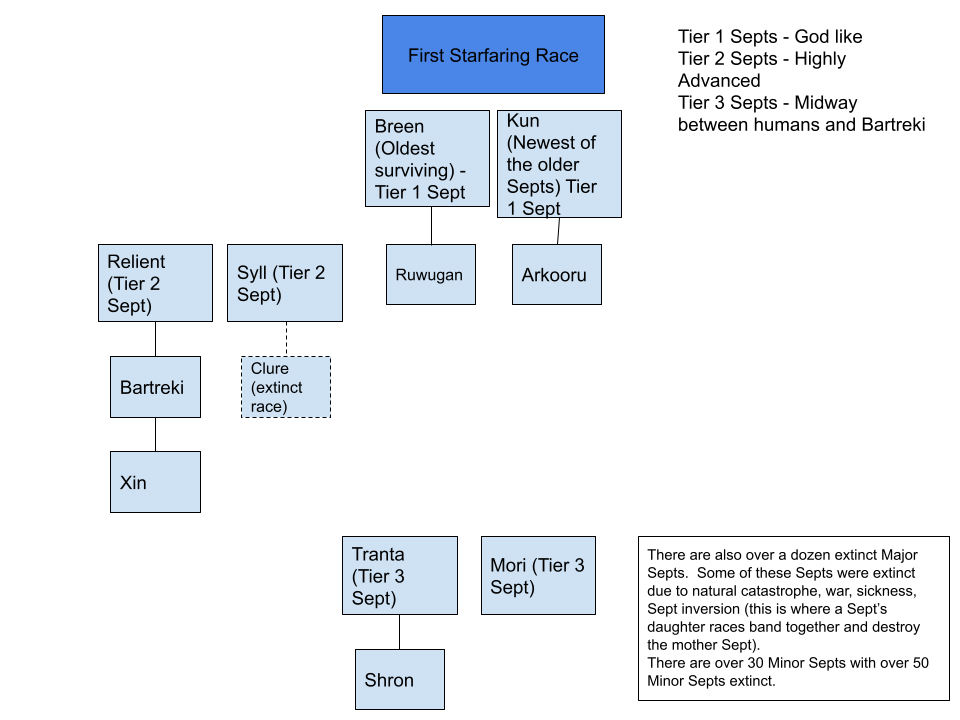
Orion Arm Major Sept Territories

Orion Arm

Galactic Technologies
There are three major technologies that galactics care about; awareness, travel, weapons.
Galactic regulations insist that Septs do not impose on the existence of other Septs. At the same time, Septs have strived over eons with one another to achieve Major distinction and to secure their legacy throughout the galaxy. As a result, conflicts are unavoidable. So while weapon technologies are not considered the highest form of intelligent expression, tensions between Galactic compliance and Galactic significance drive the need for them.
Travel is usually the hallmark of a Sept’s capabilities and place in the Galactic order. The Major Septs have developed ways to fold space and time while younger Minor Septs still rely on some type of substance-based propulsion system as their sole source of movement. As a side note: even more of a travesty — some races have been left orphaned either as a result of intergalactic war or from negligence by their mother race. Hence, some reason that Earth is just such a situation. But there seems to be no evidence of this.
But the most desired technologies are associated with awareness which may include basic knowledge acquisition to technology transfer to sentience itself. These technologies are wide and varied due to the obvious diversity in physiologies between races. For example, the Bartreki utilize cocoon-like sacs to convey knowledge throughout the maturation cycle of the species. Early communications with the earth species seemed to suggest that they’ve embedded artificial appendages into their bodies to enhance their capabilities. Very interesting indeed.
Orion Paradigm Story
The Orion story line starts at a place where Earth has established space travel with some competency to travel throughout the solar system and that having daughter races (dandelions, whales, chimps, dolphins, etc) are established (but not perfected and some further along than others). Implants are a key technology that Earth possesses. The story’s grand narrative is anchored around the Earth Sept and their identity/survival in an already rather established galactic community. The lead race (Sept mother race) is humanity. And they are fragile, naive, ignorant, weak, technologically deficient (when compared to most other races), and emotional. But also an unassuming candidate to flip the script on the rest of the galaxy on inadvertently and clumsily stumbling into being closer to the Law than any of the Major or Minor Septs. The Septs thought they were insiders and the inhabitants of Earth were obscure outsiders. They are about to find out that Earth might in fact be the insiders, but not because they have special powers or a long lineage of races they have in their Sept — but because they are …well… from Earth.
Key Conflicts
Perfection vs messiness
Protocol vs winging it (due to intuition, hunch, 7th sense)
Prominence vs Provenance
Primal vs Higher reasoning
Earth vs the Galaxy
Pure vs Hybrid
New vs Young
Family vs Colonialism
Timeline
|
Year | |
|
1945 |
Discovery of the Box in Antarctica Base, Mt. Erebus volcano (Survival in lava) |
|
2052 |
Solving of the first puzzle, revelation of the three internal puzzles (A, W, and E) Solutions make building of sea-walls easier (advancement of materials science). Understanding that each puzzle has more puzzles (and scientific knowledge) inside
|
|
2054 |
Internal puzzle boxes distributed around the world as part of negotiations to hold off world war — W box to Russia, E box goes to China, A box remains in the US- knowledge of boxes goes public
|
|
2056 |
US cracks Hirano Beta — neural interfacing as first fruits |
|
2056 |
Russia loses Hirano Gamma almost immediately; moves into damage control and cover mode
|
|
2057 |
China cracks open Hirano Alpha(correctly) — explosion of materials development |
|
2058 |
Beginnings of dolphin uplift — implantation of implants, use of dolphins and whales for sea level stuff
|
|
2056-2074 |
Golden Age of Development – colonization of the Moon accomplished (first baby born in 2070); first manned exploration of Mars (2066) with reusable buildings for further exploration. Conversion of power generation to predominantly orbital solar power beamed to surface via visible/radio lasers. Developments on space station design, human use of implants, dog/cat interfaces, etc. U.S. using information from ‘A box’ to develop basic genetic improvements (“unnatural hair colors”, other superficial changes, etc — based on wealth); also slowly weaponizing the tech in secret (CRISPR disaster)
|
|
2069 |
Founding of first permanent Lunar colony |
|
War over boxes. Docility virus
| |
|
2074 |
Super volcano erupts! Interferes with transmissions of space energy; loss of power and sunlight leads to social unrest that grows quickly over time
|
|
2075-2076 |
U.S. scientists use A box biology-info to develop “docility virus”; keep populations from panicking/fighting/warring/revolting against those in power; unfortunately, this backfires, as it’s a violation of FSR principles — only establishes block on genetic modification until A box stuff is further understood — addition of more error codes to weed out potential genetic manipulation; also, however, reduces human fertility, also increases human life span
|
| 2100 |
Moon becomes gateway to rest of solar system, thus accumulating power and wealth on the Moon |
| 2200 |
Establishment of the Assembly, humanity spread through solar system
|
|
2300 |
Dolphins’ Rights Movement explodes/gains steam |
| Present 2400 |
Books & Flash Stories
The Orion Paradigm: The Encounter (Part 2) by John Cho, Logosou Kudayah, Kat Rosemond, Michael Sirjue
The Orion Paradigm (Part 1) by John Cho, Gabriel P.J Graydou, Fabrice Guerrier, June P. Johnson, Debo Odegbile, David Russell
StarBright By Kat Rosemond
“Five hundred people, gone.”
“Nina, you can’t figure this out on your own. You need to take a break, get something to eat, see the sun, for crying out loud.”
“If I don’t have a reason why that starcraft turned Starport Delta into a steaming crater, Maddox is going to find any excuse to fire the first person that looks at him wrong.”
“Which will probably be you,” Bruce responded with a chuckle.
Not finding the humor in his statement, Nina Pierson chucked a pen at her coworker. She sat at her desk, holoscreens glowing in the dim office. She shared her space with Bruce Daniels in the quality assurance office of Star Bright Starliner. Being the newest member on the team meant she was tasked with sorting through all the data from the crash and presenting it to the Elected Assembly and the Galactic Aviation Administration. She hadn’t done much public speaking and was unsure she was the right person for the job.
“Listen, there is nothing extraordinary that happened on that starcraft.
Latches fail, hydraulics leak. We pride ourselves on being the last starliner company that uses combustible fuel like it’s a point of pride.”
Nina removed her glasses and untied her hair from its tight bun. She pinched the bridge of her nose, hoping to fight off a headache that was forming.
“If you aren’t going to help me find out what happened, Bruce, then leave. I happen to care what happens to our passengers. They aren’t just lines on a graph to me.”
“I feel the same way, but this isn’t something you need to kill yourself over. It was a freak accident. That’s it.”
“Five hundred people.”
Bruce threw up his hands and walked out, leaving Nina to her holoscreens.
Nina crossed the room and poured herself a cup of coffee. The bitterness of having reheated the same pot several times that day was enough to wake her up. She replaced her glasses and stood a little straighter.
“Elysia, show me the surveillance footage from Starport Delta.”
Obeying her command, the holoprojector illuminated the room. She watched as the starliner took off. The first stage of the ascent was smooth, and the solid rocket boosters splashed down as planned. The problems started when the external liquid hydrogen tank did not disengage from the starliner after burn. She watched the projection as the starliner attempted to turn back, only to explode into a large fireball.
The debris field was massive. She swiped away the video and replaced it with photographs from the scene. None of the passengers or crew survived the explosion, and hundreds of people on the ground were either injured or killed. Starport Delta was closed for months, crippling Star Bright’s bottom line. The Elected Assembly put all of their operations on hold until a cause for the crash could be determined.
“Elysia, play back audio from the cockpit voice recorder.”
“Command confirmed. Also, I noticed increased tension in your neck and shoulders as well as increased activity in the pain receptors in your frontal lobe. Shall I administer a dose of naproxen?”
“No, Elysia. Just play the audio.”
Nina collapsed into her desk chair, attempting to shrug away her headache. She opened another holoscreen and pulled up the specifications of the starliner. She flipped through pages and pages of documents while the pilot and copilot spoke to each other in calm voices. It was only ten minutes into the crash when their voices turned concerned. She listened as they tried to manually disengage the external fuel tank to no avail.
Gleaning nothing new from the video or from the audio, Nina turned her attention to the flight data recorder. She compared the information on the list of specifications to the real time information that was saved about the flight. The inconsistencies were minor at first, likely chalked up to a lazy technician not filling their reports out on time. However, there was one anomaly she couldn’t explain away.
According to the parts manifest, the mechanism that holds the external fuel tank to the shuttle had a lifespan of one hundred flights before critical failure. Because this particular starliner was the newest in Star Bright’s fleet, there should have been plenty of flights left before it needed to be serviced. She remained laser focused on the two screens in front of her as ideas tumbled through her head.
“Elysia, can you access Star Bright’s purchase records for the past twelve months?”
“Accessing. Access denied.”
“Employee override, QA1487. Tell me where the parts for the starliner came from.”
“Official records state the parts for starliner 619 were machined in house. There is an additional purchase order for parts from All Parts Incorporated.”
Nina, who had been fighting fatigue, jumped up at the sound of an outside source of parts. As a quality assurance agent, it was her job to inspect and verify the standards of any vendors who sold parts to Star Bright. This company was a name she had never heard of.
“What is the source of this purchase order?”
“The source of the purchase order is Holland Maddox.” “Show me.”
A sudden explosion of images and text poured from the holoprojector. The pictures were of rusted and well-used starliner parts with prices well below the standard. Nina slowly lowered herself back into her seat, as if the weight of what she discovered was forcing her down.
Holland Maddox was the youngest CEO in Star Bright’s history. It was a family business. Unfortunately, the Maddox family was a family of sharks. They fired employees randomly and made examples of those that didn’t immediately fall in line. When half of the workforce in the machining division was fired, Holland himself assured Nina that production wouldn’t slow down and that quality wouldn’t suffer. The crater that used to be Starport Delta begged to differ.
“Ever the diligent worker, Miss Pierson,” Maddox said, standing in the doorway to Nina’s office.
He caught her standing amidst the images of used parts projected into the room.
“Mr. Maddox, I- I was just–”
“Shh. You don’t have to say a thing.” Maddox crossed the room to Nina, towering over her as he placed a hand her shoulder. “I knew I could count on you to do your job and do it admirably.”
“I don’t understand, sir. You promised that quality wouldn’t suffer, but this, none of this makes sense. How could you approve of this?”
“You’ve met my father. You know the kind of pressure I am under to make sure that this company stays profitable.”
“But at the sake of all those lives? If you switched to quantum propulsion like everyone else–”
“Then we would be like everyone else! We wouldn’t be Star Bright, the company that has been in my family since the first commercial space flight in 2020.”
Anger flashed across Maddox’s face as his hand crept up to Nina’s neck. She tried to back away from him, but his long arms kept her within reach. He applied pressure to her windpipe, causing her to struggle to breathe.
“Now you’re going to write up what happened as a freak accident, and you’re going to make sure the Elected Assembly doesn’t find out about this. Do I make myself clear?”
Nina couldn’t talk. She held on to his wrist in a futile attempt to save herself.
“Do I make myself clear?!”
Maddox’s voice boomed in Nina’s office as his grip tightened. She nodded as her vision started to fade. He released his grip on her, leaving her gasping for breath on the floor at his feet. He knelt down and tilted her chin up, forcing eye contact.
“I want to see a copy of the report before you present it to the Elected Assembly. Is that understood?”
Tearfully, Nina nodded her head.
“Maybe next time you’ll behave differently when your access is denied,” Holland Maddox said over his shoulder as he strode out of her office.
The Assemblis By T.H. Cooke
An excerpt from History of the Assemblis, by Haviye Horst (Volfstock & Phau, Tranquility Prime, Luna: 2392), pg 231–232:
“[…] Although the warning signs grew in both number and intensity in the months preceding the super-eruption, very few geologists correctly predicted what would occur. An almost constant rain of explosive impacts – from conventional armaments, orbital bombardment platforms, and even occasional tactical nuclear strikes – introduced a high degree of noise into the global seismic data, making it almost impossible to distinguish the danger until only days before the eruption.
[…] By then, of course, it was too late. In the early morning hours (local time) of Sunday, October 16th, 2092, the Yellowstone Caldera super-eruption began in earnest. […]
Approximately fifteen million citizens of the Imperial States of America died within the first month, and most of those deaths, historians believe, were not caused directly by the eruption, but instead by the collapse of the infrastructure that allowed efficient distribution of resources such as food, water, electricity, fuel, and medical supplies. […] Up until this point, western portions of the ISA had largely been spared the bulk of the war’s destruction; the super-eruption, however, put these regions into parity with the Eastern coast, and almost instantly eviscerated the ISA’s capacity to wage war, as well as it’s famous “American fighting spirit.” The WDCI (or, more formally, the “First Washington DC” treaty), which formally ended the war with the ISA’s conditional surrender, was signed December 7th, 2093.
Unfortunately, the end of the war was not the end of the eruption; the Yellowstone Caldera eruption would not end until mid-January, and the deleterious effects had already begun to spread world-wide. The century’s hard-won successes against runaway global warming were now compounded by the blanket of volcanic dust encircling the globe. The northern hemisphere faced one of the harshest winters on record; in the global south, this year is often referred to as “the year that summer was murdered.” […] Many feared that the volcanic eruption, compounding atmospheric damage done by the war and previous climate control efforts, would trigger runaway global cooling, plunging the planet into a new ice age. […] Opinion leaders and media partisans began publicly discussing the possibility that, as a species, humans might not survive.
[…] Most of the various state institutions and governing bodies recognized that the war had significantly limited the ability of any one power to respond to this disaster. The WDCI provided guidelines for world powers to come together in discussion to resolve global-scale issues; this framework paved the way for the establishment of the “Second Washington DC” treaty, or the WDCII. A significant result of the WDCII was a formalized agreement for all nation-states to unify in the “Acquisition, Storage, and Sharing of Essential Materials, Basic Labor, and Integral Skills”; this portion of the agreement was often called the “ASSEMBLIS Framework” for short, and the name stuck.
[…] The first ASSEMBLIS Council was convened August 12th, 2095, with representatives from over one hundred-fifty regions on Earth. Their first task: establish the infrastructure necessary to save the human race. Before the year was out, lobbyists from Luna had managed to convince a significant portion of the Council that (at least partial) evacuation of the planet would not only be viable but necessary; in doing so, they secured representation for Luna on the Council – the first such representation for E-pats.”
ref: https://www.vox.com/2014/9/5/6108169/yellowstone-supervolcano-eruption
2100 By K.T. Seto
It is the year 2100, 31 years after the founding of the first permanent Lunar colony; construction of Themis 1 (the first HTO station) is completed with much fanfare. The celebration is simulcast on every stream and the Head Minister of the Assembly announces the start of construction of the first autonomous Mars Colony and Trojan 2 (LTO) station during their opening ceremony speech. Humans and their Elevated and Robotict workforce have made history in its creation and assured the survival of all the orbiting colonies of humanity.
The full details of the Kolenov Disaster are now common knowledge and with it begins the rise of a new extremist sect- the Sanitus Sapians They see the Erebus Boxes and the tech that has arisen because of them as evil. Eschewing any technology developed as a result of them, they begin rapidly escalating terrorist campaigns to eliminate its influence from society, threatening to change the war from the low simmer of sporadic incidents into a full-blown multinational conflict. They launch an attack on the ceremony grounds which is thwarted at the last minute.
The fledgling Assembly, which took over for the loose union of corporations that run the shipping routes between Earth and her colonies and stations a year before steps up to help. Since its inception it has worked with the corporations but had little support and was struggling to find its voice. The terrorist attack after the dedication ceremony allows them to surmount their struggles as they forge an alliance backed by the uber rich that bypass the inequities and inefficiencies of governments and selfishness of private sector modern pirates to address the issue of the terrorists.
With the backing of the UN – which has been in steady decline since the United States started coming apart in the mid 21st century – and the Lunar colony, it commissions a panel of scientists to come up with a series of tests. These tests help weed out the Luddites and determine each human’s place in society.
It is a grand effort to recapture the spirit of peace and prosperity that followed the opening of the boxes, which was lost in the aftermath of the double punch of pandemic and war. Aided by AI and newly developed techniques learned from the opening of the E box in Asia, the Pax Novus Exams (PNE) are broken into three levels with a fourth retesting exam given to those whose scores do not immediately provide clarity for their alignment. The identification of Luddites is almost always spot on alleviating the growing concern by the general population about the ramifications of the tests and allowing them to quickly help the Assembly solidify their standing.
Riding the wave of public sentiment and seeing the inevitability of the increase in military pressure to come up with more means to control the population, the Assembly uses its newfound cache to force a vote to move their headquarters, and that of the UN to the Lunar capital.
Working Backwards By Sean Mabry
Ash or fish rot? Those were Sarah’s only olfactory choices. For reasons beyond her clearance level, the project had to be carried out as close as possible to the volcano. Thus, when she woke up every morning, she could go out and smell the ashes or stay inside the cramped half an oil platform hastily converted into a research lab.
Like most mornings, she went with fish rot. She’d never been the squeamish type anyway and she could almost convince herself the orange sky was beautiful so long as there was a pane of glass in the way. After wolfing down a protein bar she made for the lab, then broke into a run as she heard the sound of sobbing.
She burst through the door to find Arjun huddled by the edge of the pool. With a sigh of relief, she tiptoed over to him. He was cradling another dead dolphin in his arms. He shook himself out of it when he noticed Sarah.
“Sorry. Just got started early and found her floating. I’ll be good, just give me a moment.”
Sarah put a hand on his back.
“You don’t have to be. This sucks. It sucks every time.”
Arjun nodded.
“Yes. Yes it does.”
He didn’t need a pep talk. Nobody on the project did. If it wasn’t the dolphins, it was all of humanity and possibly all life on earth. The One University insisted neural implants were the key. Terraforming, faster space flight, and even off-world colonies were all just around the corner — but the default human brain wasn’t going to get there in time. If only it weren’t so prone to aneurysms upon contact with the implants.
So as Arjun prayed for the last dolphin, Sarah prepped the surgery tank for the next. It was a hail mary, but if they could get the implants to work in a non-human species, maybe they could work backwards. Anaesthetics, like everything, were in limited supply, so once the next dolphin was secure in its harness, Arjun excused himself.
Sarah really wasn’t the squeamish type. She loved dolphins just as much as Arjun — perhaps more so — but the blood and the click-screaming and the melon threatening to slip out of place were nothing new to her. Besides, she had her own ritual for after the surgery. Not prayer, per se. Instead, she’d go outside, vomit through the ash and into the ocean below, then pound her fists on the railing until they went numb.
The next morning, she didn’t find Arjun sobbing. Instead, she found him staring into the tank with his hands over his mouth.
“Sarah? You didn’t open that gate, did you?”
He pointed to the gate at the bottom of the tank that led out into the ocean.
It had an 8 digit code panel so the dolphin catcher bots could get themselves in and out. The panel was still flashing “Accepted”. Arjun beamed. Sarah’s eyes went wide.
“Go call Command. NOW!”
Visual Arts by Dwight Torlay

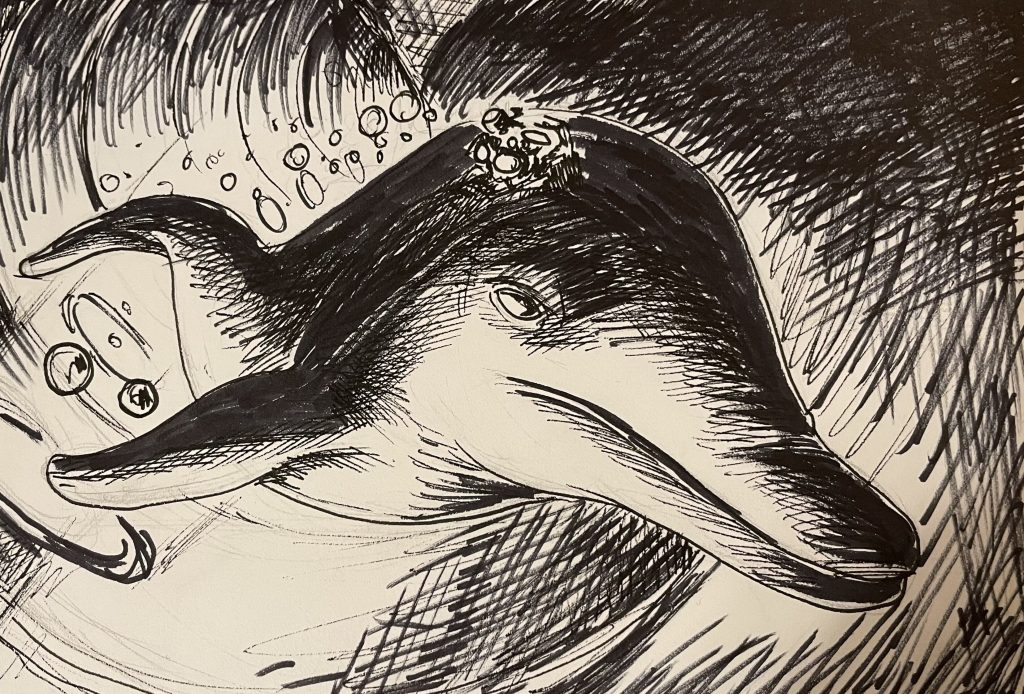
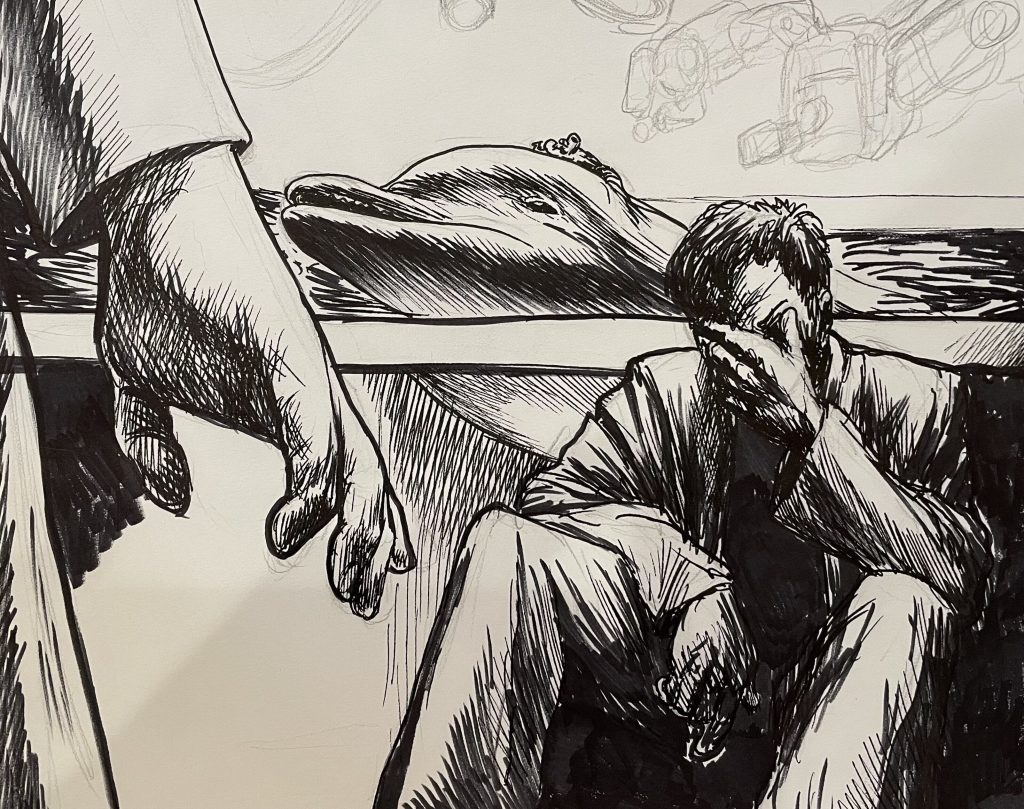
Interview with the Showrunners of Orion Paradigm World
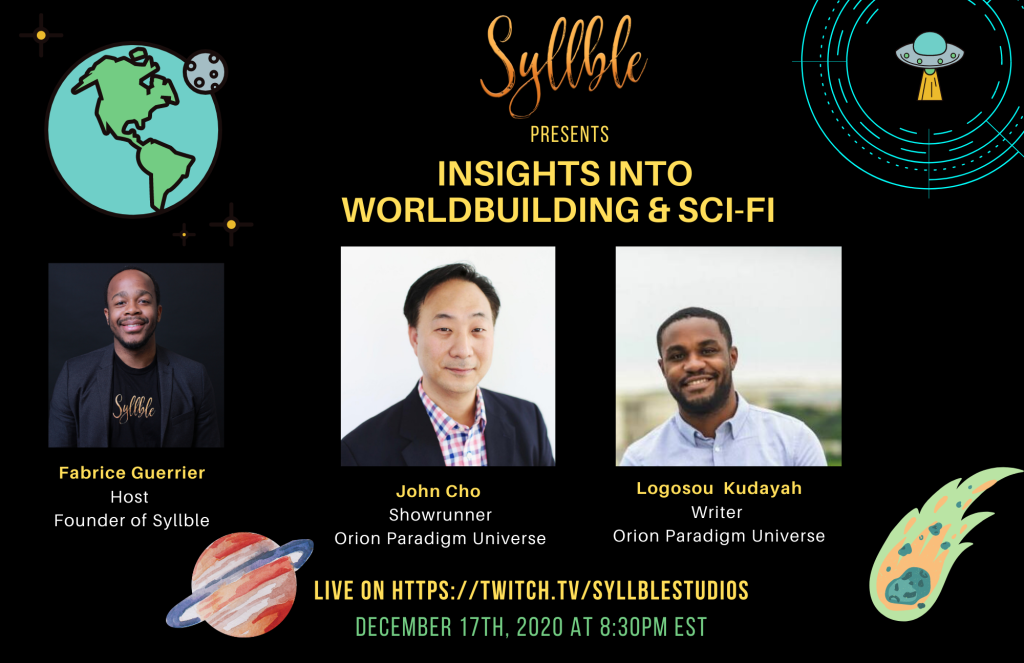
WORLD FORUM
